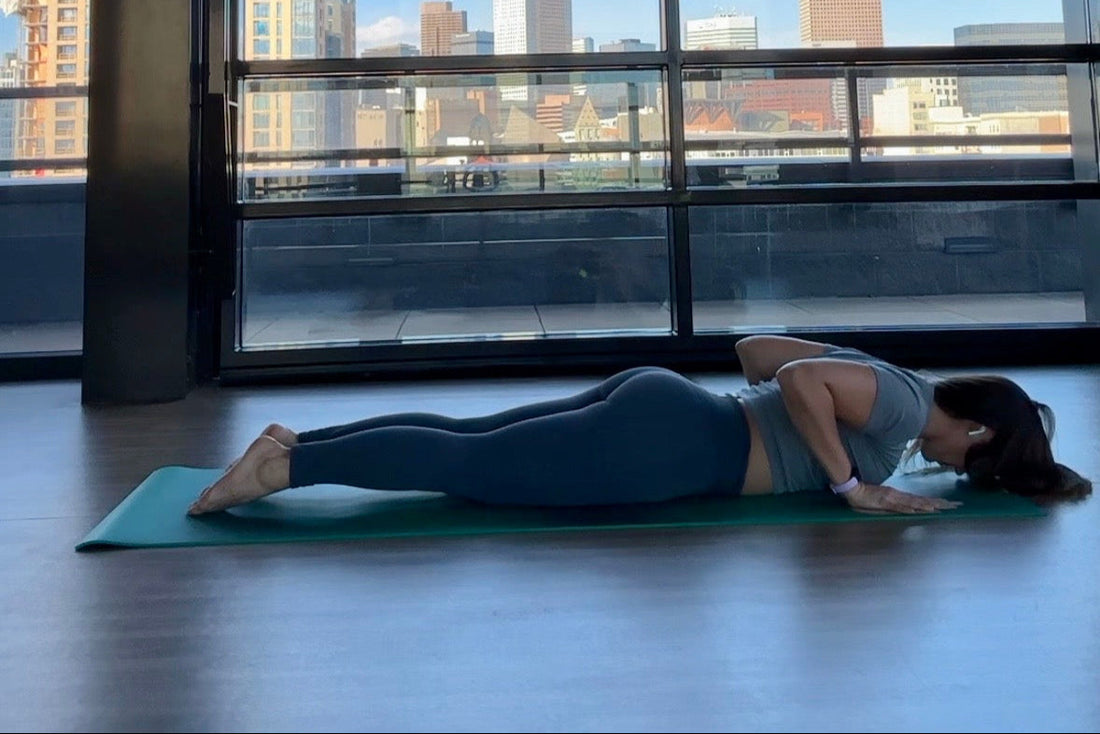
Grounding Yourself: How Yoga Supports Mental Clarity
Share
Grounding Yourself: How Yoga Supports Mental Clarity
If you’ve ever felt mentally scattered, anxious, or like your thoughts are racing in a hundred directions, you’re not alone. In our busy, overstimulated world, finding a way to ground yourself can be transformative. Yoga offers a simple yet powerful path to mental clarity—starting with grounding poses. See the short sequence below to start grounding at home.
Nervous system 101 (in plain English)
Your nervous system is your body’s command center. The autonomic branch runs “automatic” functions like heart rate, breathing, and digestion. It has two main gears:
- Sympathetic (“fight, flight, freeze”) that speeds things up to handle stress.
- Parasympathetic (“rest and digest”) that slows things down so you can recover.
When life keeps stomping on the gas pedal, the stress system can stay switched “on,” and it’s harder to feel calm, focused, or rested. CDCNHLBI, NIH
Signs your system might be overstimulated
Day-to-day clues can include irritability, trouble falling or staying asleep, muscle tension or jaw clenching, racing thoughts, and difficulty concentrating. Stress commonly disrupts sleep and focus, while muscle tension (including jaw clenching/bruxism) is a classic stress response. If these symptoms persist or interfere with daily life, it’s wise to talk with a health professional. National Institute of Mental Healthmc3michigan.org
What pushes the system into overdrive?
Plenty of normal life factors can keep the stress gears stuck:
- Lifestyle load: chronic stress, not enough movement, irregular meals, or screen-time late at night that undercuts sleep. National Institute of Mental Health
- Sleep disruption: short, irregular, or poor-quality sleep heightens stress reactivity and fogs thinking. myplate4chatbot.stg.platform.usda.gov
- Mental health conditions: anxiety or trauma-related conditions can keep the threat-detection system on high alert. (Help is available; evidence-based therapies work.)
- Hormonal shifts/health conditions: thyroid overactivity can cause nervousness and sleep issues; some people experience mood and stress sensitivity with premenstrual dysphoric disorder (PMDD). Always discuss new or changing symptoms with your clinician. PMC+1
Why grounding poses help (and what the science says)
Grounding postures + slow, steady breathing send the body a clear “you’re safe” signal. Slow diaphragmatic breathing can nudge the parasympathetic system, improve heart-rate variability (a marker of nervous-system flexibility), and downshift stress arousal. Gentle, mindful movement such as yoga has evidence for helping with stress and mood, though results can vary across studies. PMC+1NCCIH
The “simple reset” toolkit
Small, consistent habits calm an overstimulated system. Try one or two of these daily:
- Breathe slowly through the nose for 2–5 minutes (e.g., inhale ~4, exhale ~6). Keep the breath smooth, low, and quiet. PMC
- Move gently with yoga most days—even brief sessions help many people manage stress and improve well-being. Start with grounding poses (sequence below). NCCIH
- Prioritize sleep: aim for a regular schedule and a wind-down routine; dim screens before bed. myplate4chatbot.stg.platform.usda.gov
- Eat regular, balanced meals & stay hydrated: build plates with vegetables, fruits, whole grains, proteins, and healthy fats; reach for water often. Pay attention to how caffeine affects your sleep or anxiety. National Institute of Mental Health
- Talk therapy: evidence-based psychotherapies (like CBT) help many people regulate stress and mood; consider a referral if symptoms persist.
Beginner-friendly grounding sequence (5 minutes)
Even if you’ve never done yoga before, this short flow can help you feel centered. Move slowly and keep your breath easy.
1. Mountain Pose
Stand tall, feet grounded, arms by your sides. Take 3 slow breaths.
2. High Mountain
Inhale, sweep arms overhead, reach through your fingertips.
3. Forward Fold
Exhale, hinge at hips and fold. Bend knees as needed; relax your neck, soften your jaw, close your eyes if comfortable.
4. Half Lift
Inhale, lengthen spine parallel to the floor, hands to shins, legs straight but not locked; reach the crown of the head forward.
5. Plank Pose
Exhale, step back and engage your core (drop knees if needed). Then lower your body all the way to the ground.
6. Cobra
Inhale, press tops of feet and hips down; with a gentle bend in elbows and elbows’ creases facing forward, lift chest.
7. Child’s Pose
Exhale, hips back, big toes touch, walk hands forward.
8. Downward-Facing Dog
Exhale, lift hips, press through hands; keep a soft bend in the knees if that helps your back. Hold 3–5 breaths.
9. Step Forward & Rise
Tiptoe your feet to your hands and rise to High Mountain. Repeat 2–3 times.
You can stay in any pose as long as you like, and it’s fine to gently sway in High Mountain or Forward Fold to notice tight spots. Even 5 minutes can shift your mood and focus.
Hydration tip: water is a great default throughout the day. If caffeine makes you jittery or disrupts sleep, try cutting back and notice how you feel. National Institute of Mental Health
A gentle prop you might love
If you like using props, Cork Helping Hands—our cork-based hand support product—adds natural grip and a grounded feel in standing and weight-bearing poses. It’s optional, but many beginners find that stable hands help a steady mind.
Gentle, Heartfelt Recommendation: Cork Helping Hands
If you're looking for a simple, eco-friendly support to deepen your grounding practice, try Cork Helping Hands, our cork yoga hand grips. They provide steady wrist support, encourage proper alignment, and help you feel more secure in poses—especially helpful for balance and release.
This article is educational and not a substitute for medical care. Check with a health professional before starting a new exercise program, especially if you have injuries or medical conditions.
